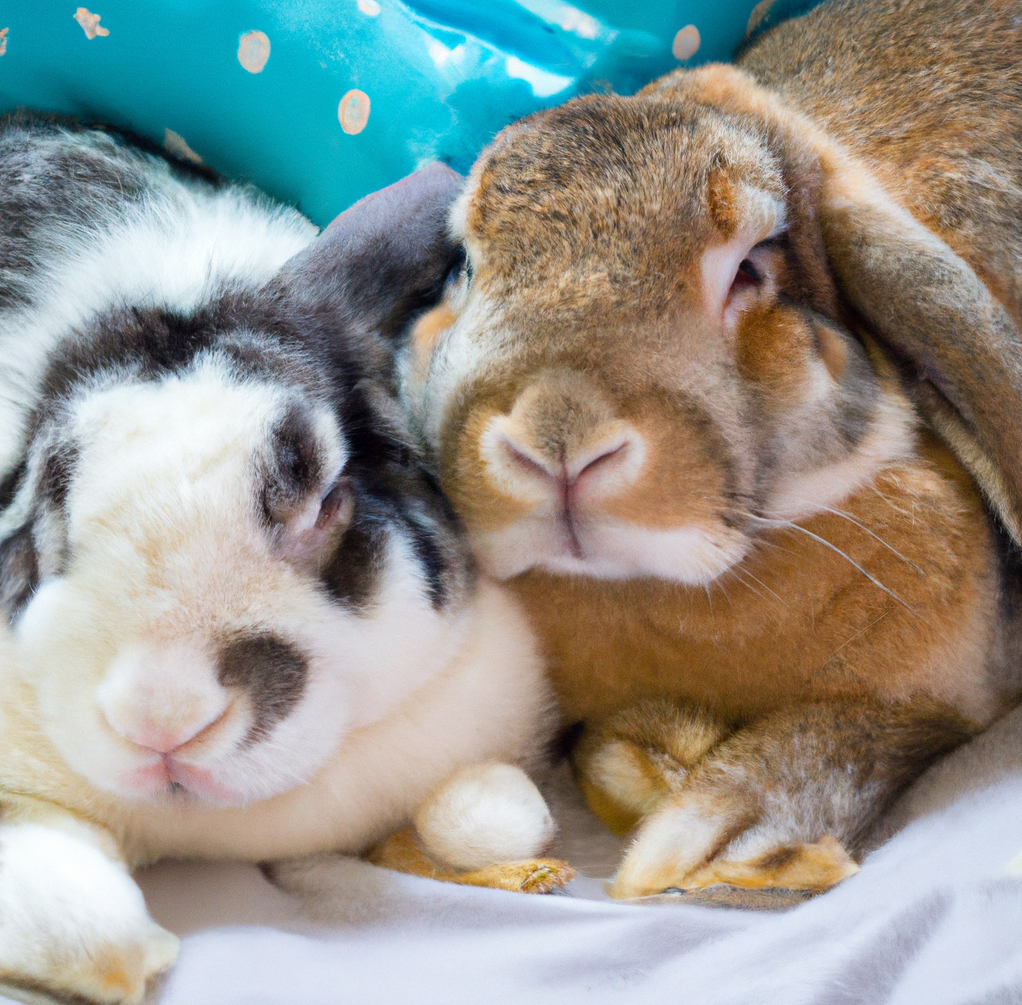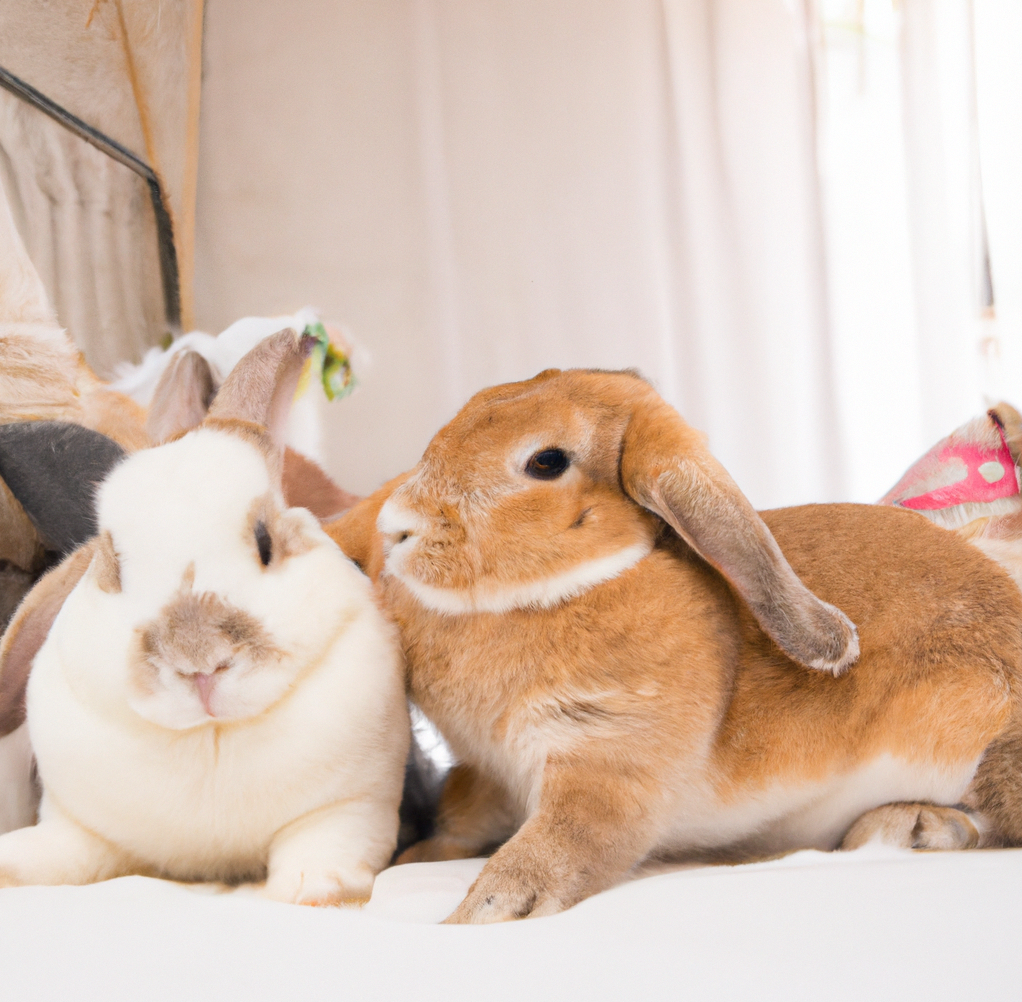If you are considering allowing your pet rabbit to sleep in bed with you, there are several factors to consider. Rabbits can be wonderful companions and they can even become a part of the family. However, before allowing your pet rabbit to sleep in bed with you, it is important to consider the risks and rewards of such a decision. This article will provide an overview of the pros and cons of allowing your pet rabbit to sleep in bed with you, as well as tips on how to ensure a safe and comfortable experience for both you and your pet.
Pros and Cons of Allowing Your Pet Rabbit to Sleep in Bed with You
Pros
1. Strengthened Bond: Allowing your pet rabbit to sleep in bed with you can help to strengthen the bond between you and your pet. Cuddling and petting your pet can create a sense of trust and comfort, which can help to deepen the connection between you and your rabbit.
2. Increased Comfort: Sleeping in bed with your rabbit can make both of you more comfortable, as rabbits are known to be affectionate and loving animals. The presence of your pet can help to ease any anxiety or stress, and provide you with a sense of warmth and companionship.
3. Health Benefits: Sleeping with your pet can also have positive health benefits. Studies have shown that people who sleep with their pet rabbits are likely to get a better night’s sleep than those who do not.
Cons
1. Health Risk: Allowing your pet rabbit to sleep in bed with you can pose a health risk. While your pet is likely to be well-behaved and clean, there is still a chance of it bringing in parasites or fleas into your bed.
2. Allergies: If you or someone in your household is allergic to rabbits, then sleeping with your pet can be dangerous. Exposure to rabbit fur and dander can trigger severe allergic reactions in some people.
3. Mess: If your pet is allowed to sleep in bed with you, then there is a chance of it making a mess. Rabbits can be prone to chewing and digging, which can result in torn bedding and sheets.
How to Create a Cozy Sleeping Environment for Your Pet Rabbit
Creating a cozy sleeping environment for your pet rabbit is essential for their health and well-being. A comfortable sleeping area will give your pet the necessary rest and relaxation they need to stay healthy. Here are some tips to help you create a comfortable and secure sleeping space for your rabbit.
1. Select the right size cage. Rabbits prefer to sleep in a cage that is large enough to move around in. A cage that is too small will cause your pet to feel cramped and uncomfortable. Choose a cage that is large enough for your rabbit to stand up, lay down, and move around comfortably.
2. Place the cage in a quiet area. Rabbits need a quiet area away from foot traffic, loud noises, and bright lights in order to get the best rest. A quiet corner of the room or a spare bedroom is ideal.
3. Provide soft bedding. Give your rabbit a soft, comfortable place to sleep. Choose bedding made from natural materials such as straw or hay. Avoid synthetic materials like fleece or blankets, as these can cause respiratory problems for your pet.
4. Add a blanket or towel. Covering the cage with a light blanket or towel will help keep your rabbit warm and comfortable. Make sure the blanket is lightweight and breathable so your pet doesn’t overheat.
5. Consider using a burrow bed. Rabbits love to burrow and feel secure, so consider providing a burrow bed. This will give your pet a safe and secure place to rest.
Creating a cozy sleeping space for your pet rabbit is an important part of their overall care. Follow these tips to ensure your pet has a comfortable and secure environment in which to rest.
Safety Tips for Keeping Your Pet Rabbit Close During Sleep

1. Place your rabbit’s cage in your bedroom. This will make it easier for you to keep an eye on your pet during the night.
2. Make sure your rabbit’s cage is secure. Check for any possible openings where your rabbit could escape.
3. Line the bottom of the cage with newspaper or other absorbent material. This will help contain any messes that may occur overnight.
4. Provide your rabbit with plenty of toys and chew items. This will help keep them occupied while they are in their cage.
5. Place a small night light near the cage. This will help you keep an eye on your pet without having to turn on a bright light.
6. Position the cage away from any windows or drafts. This will help ensure that your rabbit stays warm and comfortable while they sleep.
7. Make sure you provide your rabbit with plenty of fresh water and food. This will help keep them hydrated and nourished during the night.
8. Talk to your rabbit before bedtime. This will help them feel comfortable, secure, and relaxed before they go to sleep.
By following these tips, you can help keep your pet rabbit close and safe during the night.
The Benefits of Bonding with Your Pet Rabbit Through Sleeping Together
Sleeping with a pet rabbit is one of the best ways to bond with your furry friend. While some people may be concerned about the potential risks associated with sleeping with their pet rabbits, there are numerous benefits that make this an ideal way to strengthen the bond between you and your pet.
The first benefit of sleeping with your pet rabbit is that you can provide them with a sense of security and comfort. Rabbits are naturally social animals, and sleeping together allows you to provide your pet with a sense of security and comfort. This is especially beneficial for rabbits who may be stressed or anxious, as the warmth and closeness of sleeping together can help to ease their nerves.
Another benefit of sleeping with your pet rabbit is that it can help to deepen the bond between you and your pet. As you snuggle up with your rabbit, you will be able to build trust and understanding between the two of you. This can lead to a stronger bond that will provide your pet with the security and love they need.
Finally, sleeping with your pet rabbit can also provide an opportunity for you to observe and monitor their health and wellbeing. As you snuggle with your pet, you can keep an eye out for any changes in their behavior or health. This can be invaluable in ensuring that your pet is healthy and happy.
Overall, sleeping with your pet rabbit is an excellent way to bond with them and provide them with a sense of security and comfort. It can also provide an opportunity to observe and monitor their health. As long as you take the necessary precautions to ensure the safety of both yourself and your pet, sleeping together can be a wonderful experience for both of you.
How to Tell if Your Pet Rabbit Wants to Sleep in Bed With You
If you share a special bond with your pet rabbit, you may be wondering if it wants to sleep in bed with you. While rabbits can be loving and affectionate pets, they are also very independent creatures and may not want to sleep in the same bed as you.
To see if your pet rabbit wants to sleep in bed with you, look for signs of affection. A rabbit that is comfortable around you will often approach you when you enter the room and may even groom itself in front of you. If your rabbit enjoys being petted, it may also be more likely to want to sleep in bed with you.
Another sign that your rabbit may want to sleep in bed with you is if it often follows you around the house. This means that it is comfortable with you and trusts you enough to sleep near you.
When you offer your rabbit a place to sleep in your bed, take a look at its behavior. If it hops on the bed and looks relaxed, then it may be comfortable enough to sleep with you. If your rabbit is hesitant or nervous, it may not be ready to sleep with you yet.
In addition to these signs, pay attention to your rabbit’s sleeping habits. If it often sleeps close to you, such as on the couch or floor near you, it may be comfortable enough to sleep in bed with you.
Finally, look for signs that your rabbit is not comfortable sleeping in bed with you. If your rabbit appears scared or uncomfortable, it may not be ready to sleep in your bed yet. Let your rabbit have its own space, and don’t force it to sleep in bed with you until it is ready.
By paying attention to your pet rabbit’s behavior and looking for signs of affection, you can determine whether or not it wants to sleep in bed with you.
What to Consider Before Letting Your Pet Rabbit Sleep in Bed With You

If you are considering letting your pet rabbit sleep in bed with you, there are a few factors to consider before making the decision.
First, rabbits are known to be skittish and easily startled, so it may not be the most comfortable experience for your pet. If you do decide to let your rabbit sleep in bed with you, it is important to make sure the environment is as calm and safe as possible. This means keeping the noise level to a minimum, as well as avoiding sudden movements or loud noises.
Second, rabbits can be prone to chewing on bedding and other soft materials. If your rabbit is allowed to sleep in bed with you, it is important to provide them with their own bedding, such as a blanket or towel, that they can chew on without destroying the bedding. Otherwise, you may find yourself having to replace your bedding more frequently than you would like.
Third, it is important to remember that rabbits are nocturnal animals. This means that they may be more active during the night, which can disrupt your sleep. If you decide to let your rabbit sleep in bed with you, it is important to plan accordingly and make sure that you are getting enough rest.
Finally, it is important to keep in mind that rabbits can carry diseases, such as salmonella, which can be transmitted to humans. If you do decide to let your rabbit sleep in bed with you, it is important to take the necessary precautions to ensure that your pet is healthy and free of any infectious diseases.
Overall, letting your pet rabbit sleep in bed with you can be a rewarding experience, but it is important to consider the factors mentioned above before making the decision.
Tips for Setting Boundaries When Your Pet Rabbit Wants to Sleep in Bed With You
1. Be Consistent: Establishing a routine is key when it comes to setting boundaries with your pet rabbit. Do not let them sleep in bed with you one night and then not the next. This will confuse them and make it difficult to train them properly. Instead, make sure to keep a consistent rule to ensure your pet knows what to expect.
2. Make Alternatives: If your pet rabbit is used to sleeping in bed with you, it can be hard to break the habit. To help them adjust, consider providing them with an alternative sleeping area that is just as comfortable. You can use blankets, pillows, and furniture to create a cozy sleeping area that your pet can enjoy.
3. Use Positive Reinforcement: Positive reinforcement is an effective way to encourage your pet rabbit to sleep in their designated area. When they sleep in their bed, reward them with treats or verbal praise to reaffirm the desired behavior.
4. Establish Clear Rules: If your pet rabbit does not follow the rules, it is important to correct them swiftly and consistently. Be firm and patient as you explain the boundaries to your pet and take the time to answer any questions they may have.
5. Don’t Give In: It can be tempting to give in to your pet rabbit’s demands, especially when they give you those big puppy-dog eyes. However, remember that your pet needs to understand that you are the one in charge and that you have the ultimate say in where they can and cannot sleep. If you give in too easily, your pet may start to think that they can push the boundaries.
What to Expect When Your Pet Rabbit Sleeps in Bed With You
If you have decided to let your pet rabbit sleep in bed with you, there are certain precautions you should take. First, ensure that the rabbit is healthy and free of any contagious diseases. If the rabbit is suffering from any illness, consult with your veterinarian before allowing the pet to sleep in your bed.
Second, be sure to keep the bedding clean and free of debris that could be harmful to the rabbit. Remove any bedding that could be hazardous to the animal, such as sharp objects or small items that the rabbit could swallow.
Third, keep the bedding comfortable and warm for the rabbit. Make sure that the bedding is made of materials that are safe for the animal. Consider using a fleece blanket or towel for the rabbit to sleep on, as these items are soft and warm.
Fourth, provide plenty of toys and other items for the rabbit to play with. This will help keep the animal entertained and occupied while it is in bed. Make sure that the toys are safe for the rabbit, and that they are not small enough for the rabbit to swallow.
Finally, remember that the rabbit may not be accustomed to sleeping in a bed and may take some time to adjust. Be patient and understanding with your pet and provide it with a safe, comfortable environment. With time and patience, your rabbit should adjust to sleeping in bed with you.
Conclusion
Overall, it is really up to the individual and their pet rabbit to decide if they should sleep in bed together. As long as the rabbit is comfortable and safe, it can be a wonderful way to bond with your pet. However, it is important to bear in mind that rabbits can carry diseases, so take the necessary precautions to ensure your health and safety before allowing your pet rabbit to sleep in bed with you.

